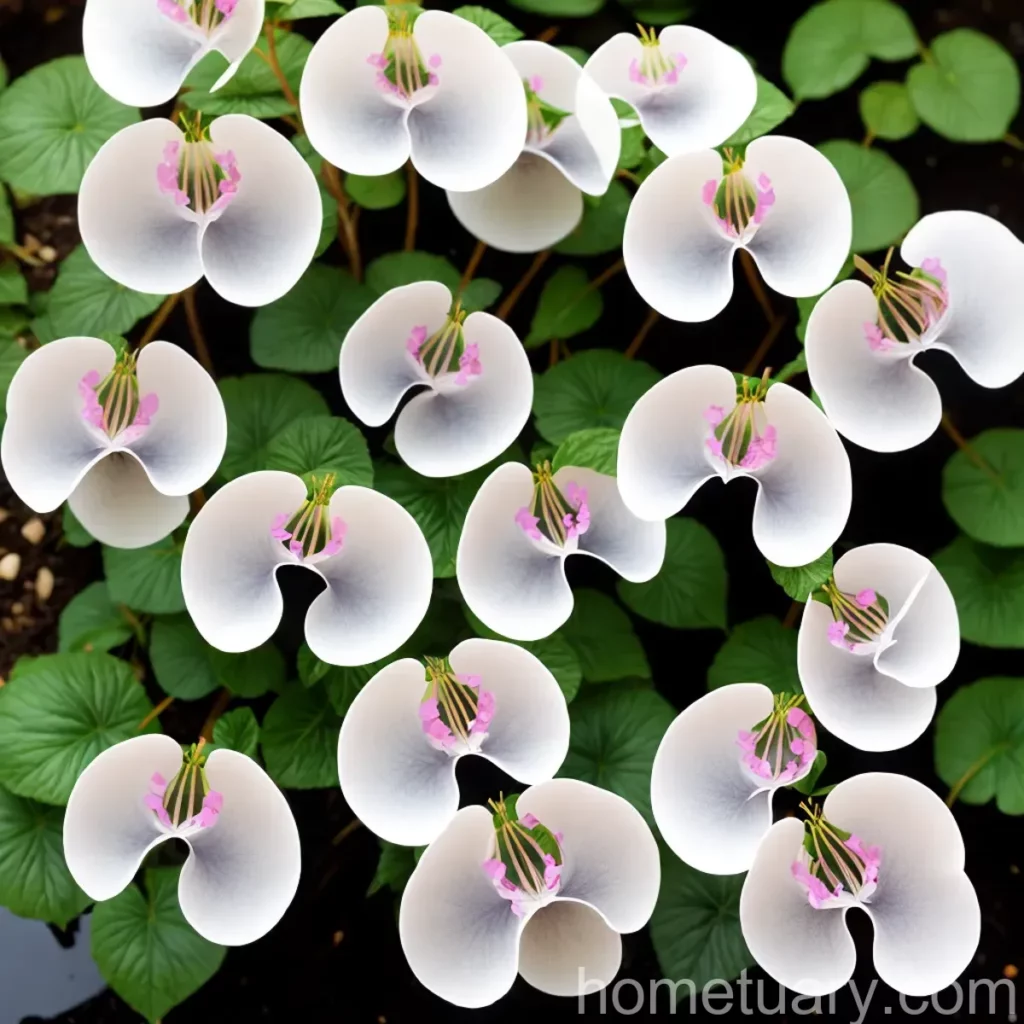Annual Honesty (Lunaria annua): A Complete Guide for Plant Enthusiasts
Introduction
Plants have always fascinated humans with their diversity and beauty. Among the plethora of plant species, the annual honesty (Lunaria annua) stands out for its striking appearance and cultural significance. This comprehensive guide aims to provide valuable insights into the characteristics, cultivation, uses, and maintenance of the annual honesty plant.
What is Plant: Annual Honesty (Lunaria annua)?
Annual honesty (Lunaria annua) is a biennial flowering plant belonging to the Brassicaceae family. It is native to the Balkans and Southwest Asia but has been cultivated and naturalized in many parts of the world due to its ornamental and medicinal value. The common names for this plant include honesty, money plant, satin flower, and silver dollar plant, all of which reflect its distinct features.
Key Takeaways – Annual Honesty (Lunaria annua)
Lunaria annua is an herbaceous plant known for its:
– Delicate purple or white flowers
– Translucent silvery seed pods
– Biennial lifecycle
– Medicinal and ornamental uses
In this guide, we will delve deeper into the cultivation, uses, and maintenance of this captivating plant.
Characteristics of Lunaria annua
The annual honesty (Lunaria annua) exhibits several distinct characteristics that make it a desirable addition to gardens and landscapes. Understanding these features is essential for successful cultivation and maintenance. Some key characteristics of the Lunaria annua plant include:
- Biennial Lifecycle: Lunaria annua follows a biennial lifecycle, producing foliage in the first year and blooming with flowers in the second year.
- Flower Appearance: The plant bears clusters of attractive, four-petaled flowers in hues of lilac, purple, or white, adding a touch of elegance to any garden.
- Seed Pods: One of its most unique features is the translucent, disc-shaped seed pods, resembling silvery coins, which develop after the blooming phase. These seed pods are often used in dried floral arrangements due to their captivating appearance.
- Foliage: The foliage of Lunaria annua is heart-shaped and deeply veined, providing an appealing backdrop to the delicate flowers.
- Height: The plant typically reaches a height of 1-3 feet, making it suitable for borders and mixed flower beds.
Annual Honesty (Lunaria annua) – Cultivation
Cultivating Lunaria annua requires attention to its specific cultural requirements, including water, sunlight, soil, and fertilizer.
Uses
Lunaria annua holds significance in various domains, including ornamental, medicinal, and symbolic uses.
Water
The water needs of Lunaria annua depend on the stage of growth and the environmental conditions.
Sunlight
Lunaria annua thrives in partial to full sunlight, making it ideal for garden beds and borders that receive adequate light.
Fertilizer
Fertilizing the soil before planting and providing periodic fertilization during the growth phases can enhance the health and vigor of Lunaria annua.
Soil
The plant prefers moist, well-drained soil with a slightly acidic to neutral pH.
Pruning
Pruning Lunaria annua is essential for maintaining a tidy appearance and promoting healthy growth.
Propagation
The propagation of Lunaria annua can be achieved through seeds and division.
Container Popularity
Lunaria annua is popularly cultivated in containers due to its relatively low maintenance and attractive appearance.
Common Diseases
Lunaria annua may be susceptible to certain diseases that can potentially affect its growth and overall health.
Disease Diagnosis
Understanding the common diseases and their symptoms is crucial for effective disease diagnosis and management.
Common Pests
Pests can pose a threat to the health and vigor of Lunaria annua, making pest control measures an essential aspect of its maintenance.
Botanist’s Tips
Honing in on expert tips and recommendations can greatly contribute to the successful cultivation and maintenance of Lunaria annua.
Fun Facts
Exploring the intriguing and lesser-known facts about Lunaria annua can deepen one’s appreciation for this captivating plant.
Conclusion
In conclusion, the annual honesty plant (Lunaria annua) is a versatile and captivating addition to any garden or landscape. Its unique characteristics, cultural significance, and relatively low maintenance make it a favorite among plant enthusiasts. By understanding the cultivation, uses, and potential challenges associated with this plant, enthusiasts can create thriving and visually stunning displays in their outdoor spaces. Whether grown for its ornamental beauty, medicinal properties, or symbolic significance, Lunaria annua stands as a timeless botanical treasure.
References
- “Lunaria annua: An Interesting Biennial Plant.” University of Illinois Extension, https://web.extension.illinois.edu/hkmw/downloads/48830.pdf
- “Annual Honesty (Lunaria annua).” Missouri Botanical Garden, http://www.missouribotanicalgarden.org/PlantFinder/PlantFinderDetails.aspx?kempercode=c381
- “A Contribution to the Knowledge of Chemical Compounds. of Lunaria annua L..” ResearchGate, https://www.researchgate.net/publication/343760969_A_Contribution_to_the_Knowledge_of_Chemical_Compounds_of_Lunaria_annua_L
- “Biological Activities of Lunaria annua.” NCBI, https://pubmed.ncbi.nlm.nih.gov/31277160/
- “Growing Annual Honesty (Lunaria annua).” Soil, Planting, Care & Harvesting, https://www.almanac.com/plant/annual-honesty
The guide gives comprehensive insights into the annual honesty plant (Lunaria annua), encompassing its cultivation, uses, and maintenance. It serves as an invaluable resource for plant enthusiasts seeking to enhance their knowledge and appreciation of this captivating botanical species.















